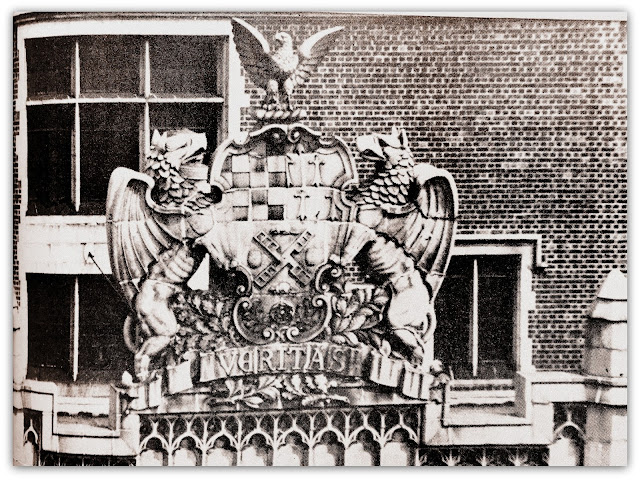This blog has been avoiding heraldry, knowing nothing about it, but there is a heck of a lot of it in Tudor City. So, deep breath, here is the first installment of Tudor City Heraldry for Dummies.
Heraldry began in the Middle Ages as a way to identify fully armored knights on the battlefield. Over time, the art of heraldry goes in many directions (think crests and coats of arms), which are regulated with fixed rules and design conventions. All heraldic imagery ‒ running the gamut from flowers and fruit to celestial beings and mythological beasts ‒ has symbolic significance.
⸺⸺⸺⸺⸺
We begin Heraldry 101 with the most spectacular heraldic display in the complex, the three identical terra cotta cartouches crowning Nos. 5, 25 and 45. (Cartouche is the fancy term for a shield). This particular shield is that of Henry VII, an appropriate choice as Henry VII was the first King of England from the House of Tudor.
One of the cartouches, in a 1960s photograph.
As seen above, the shield is supported by two gryphons, mythological creatures with the haunches and tail of a lion, and the head, wings and talons of an eagle. They symbolize, what else, majesty. Perched atop the shield is a dove, standing for peace. On the shield itself are crosses, a checkerboard field, a windmill (symbolizing agricultural endeavor), two beavers (perseverance) and a rose (beauty). The motto below the shield reads Veritas, or Truth.
 |
| Rear view of No. 5's cartouche, jazzing up a penthouse terrace. |





No comments:
Post a Comment